From ancient to modern times, monsters or supernatural creatures have been deeply embedded in Japanese culture.
Accounts and descriptions of Japanese mythical creatures have been recorded both in Kojiki and Nihon Shogi – the two oldest Japanese historical records from the early 8th century.
Throughout different times in Japanese history, including today, the presence of Japanese monsters is overwhelmingly large starting from art, literature, folklore, architecture, modern media, and let's hope not, but possibly, even right behind you!
Today might not be the day that you have a face-to-face encounter with Japanese monsters, but we can assure you that it is the day you become familiar with everything you need to know about Japanese monsters through this article.
Even if you are already feeling a bit spooked out, knowing about them is highly recommended as everywhere you look and go in Japan, these monsters are there – in conversations, pop culture, fashion, video games, anime, manga, and the list goes on.
Let’s gather all the courage we have and jump straight into the fascinating (or terrifying?) world of Japanese monsters and mythical creatures!
Japanese Monsters: Confusion around their classification
You might be imagining fire-spitting creatures and grotesque-looking ogres when you think about Japanese monsters, but let us tell you what the really scary thing about them is – how confusing it is to classify and categorize them.
To save all of us from any unnecessary horrors, we will come to terms with a simple fact, it is impossible to have any clear-cut classification when it comes to Japanese supernatural beings and monsters.
The number of types of Japanese monsters is staggeringly large and countless words are used to describe them.
On top of that, most of these words are used interchangeably and to describe different things depending on the context.
Also, we describe these creatures or monsters as being part of folklore or mythology most of the time but many of them are in reality, creations of artists and writers in medieval Japan, which has also somewhat evolved by the effect of being told as folklore over time.
The bottom line, nothing is clearly defined and the lines are blurry when it comes to Japanese supernatural beings. Having said that, we will start by introducing you to some of the groups of monsters that are the most common in Japan and the words associated with them.
Kaii (怪異)
They are supernatural phenomena – irregularities, mysterious occurrences, and irregularities that cannot be explained logically or scientifically.
For example, strange smells that seem to come from nowhere, lights going on or off automatically, and feeling the presence of someone around you even when you are alone in the room.
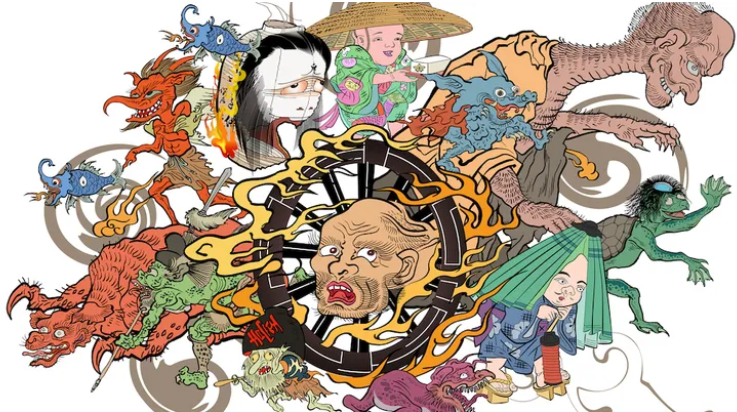
Youkai (妖怪)
This is the most common and comprehensive word used to mean “monsters” in Japanese.
In old times, Youkai was almost synonymous with Kaii, but at some point, this word came to be used for supernatural ‘beings’ or ‘creatures’ or something essentially with some kind of form or shape that can cause supernatural phenomena.
Some other words used to mean the same thing as Youkai but also as a subgroup of Youkai: Bakemono
- Kaibutsu
- Kaijuu
- Ayakashi
- Obake
- Oni
- Mononoke
- Mamono
Youkai can be of many types, cute and harmless or slightly mischievous, utterly scary and deadly, and there are even ones that will reward you or protect you from evil powers.
Bakemono /Obake (化け物)
The literal meaning of Bakemono is something that changes form, referring to a state of transformation or shapeshifting.
Bakemono is also sometimes described as a class of Youkai, and they are Japanese preternatural creatures having a specific form.
Henge(変化)
These are creatures that can change their form using their magic and interact with humans in their altered form.
The creatures are usually animals such as foxes, cats, badgers, snakes, storks, raccoons, etc.
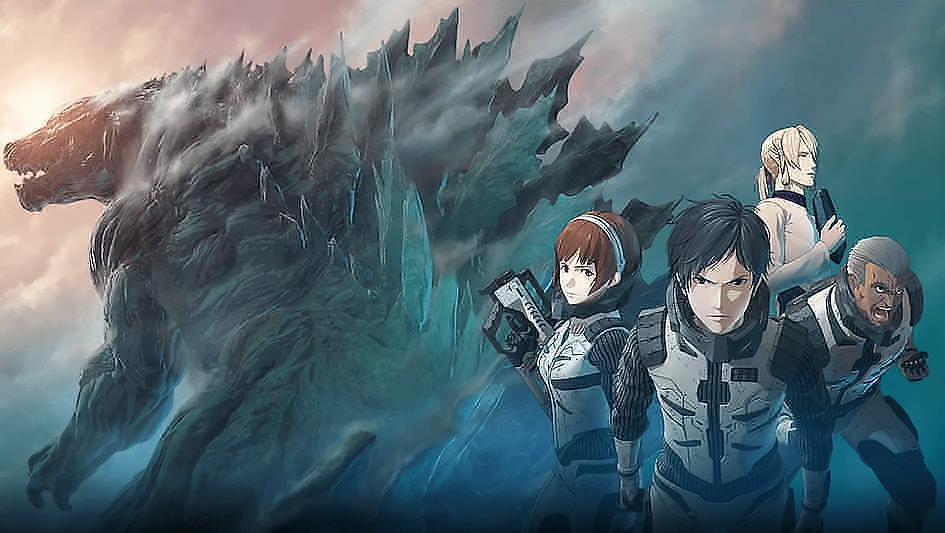
Kaijuu/Kaibutsu (怪獣)
These are magical or paranormal beasts and ghastly animals. To give you an easy idea, Godzilla is considered a Kaijuu.
Chimimouryou (魑魅魍魎)
These are monsters and spirits that originate from mountains and rivers.
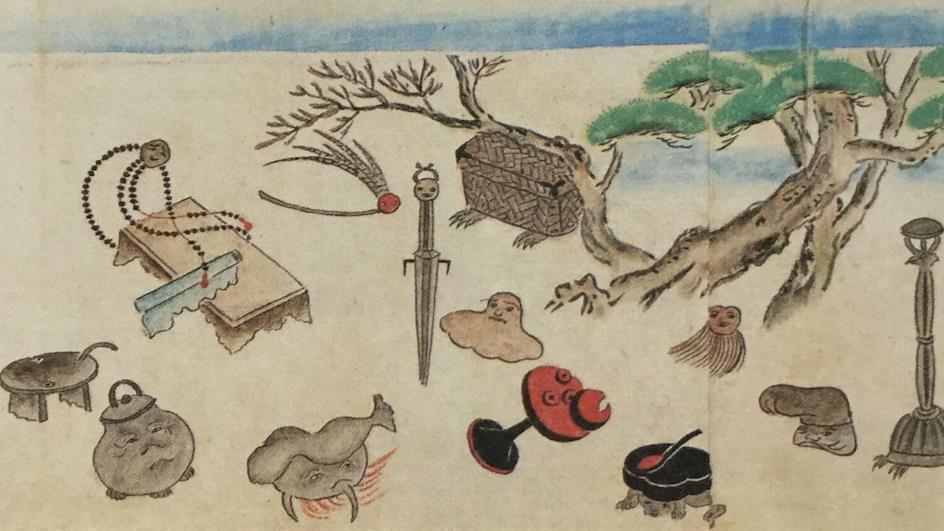
Tsukumogami (付喪神)
These are inanimate objects that have been inhabited by a spirited and become alive. For example, household items such as umbrellas, brooms, lamps, dolls, etc.
that have been there for a long time. This is said by some to happen when these objects reach their 1000th birthdays.
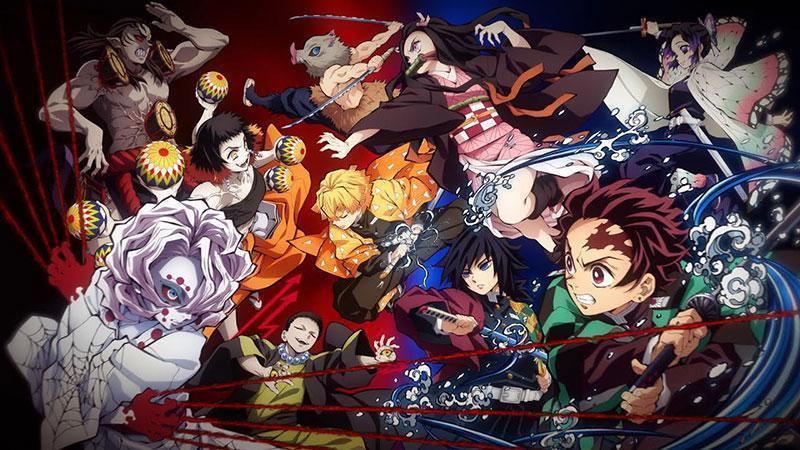
Oni (鬼)
We will have a separate section for Oni but for now, they are ogres, demons, devils, and trolls with a scary appearance.
Yuurei(幽霊)
Yuurei is probably the group having the greatest distinction from a “Youkai” and is a word used to describe paranormal beings such as ghosts, apparition, specter, and departed spirit.
For example, Sadako (the long-haired woman who comes out from the well) in the popular J-horror "The Ring".
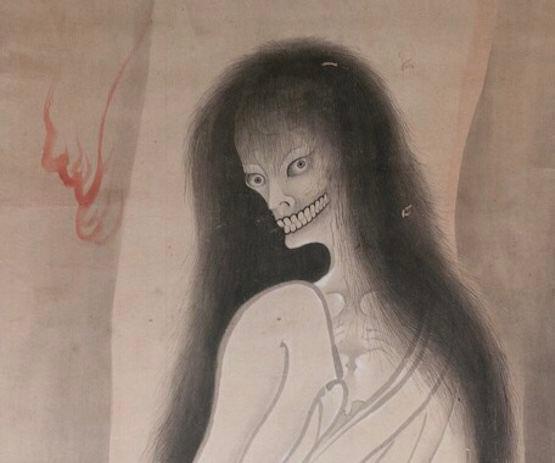
The simplified group names of Japanese paranormal beings have been listed above, but this is just the beginning.
The real fun part starts now, as we will introduce you to some of the most iconic monsters and creatures from Japan in the next section!
Main Japanese Youkai
According to many Japanese expert Youkai researchers (Yes, that is a real profession) and authors, Oni, Kappa, and Tengu are known as “The 3 main Japanese Youkai”.
So we will start with these three Youkai.
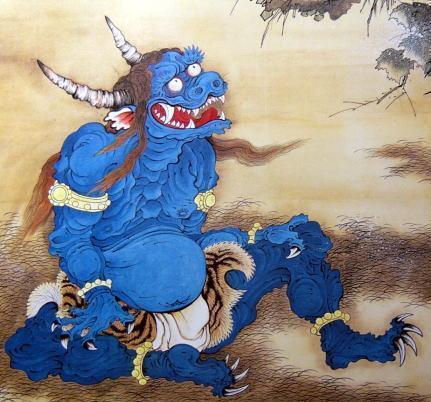
Oni (鬼)
Oni is a large class of monsters on its own and they are also one of the oldest monsters existing from ancient times in many Japanese folktales, religious beliefs, literature, and art.
They are usually translated as trolls, ogres, giants, demons, demons, etc. Depictions of Oni vary widely but generally, it is a beastly humanoid, with a giant muscular body, angry facial expression, wild hair, sharp claws, and two horns growing from its head. Most of the time, their skin has vivid colors such as red, blue, green, etc.
They wear a loincloth, are barefooted, and carry weapons such as clubs. They have an overall image of being strong, aggressive, brutish, and scary.
Oni is usually associated with evilness and they are thought to be the anthropomorphized version of ancient spirits or gods which caused disasters, disease, and other unpleasant things. They are also associated with hell in many ways such as being the gatekeepers of hell or evil underlings of the god of hell assigned to punish the residents of hell.
That being said, Oni is sometimes depicted to have good protective roles, for example, the use of Oni-faced tiles on the roofs in Japanese architecture which is believed to ward off bad luck and evil spirits, analogous to the presence of gargoyles in Western architecture.
Fun facts
- In Japan children’s game of tag is called “Oni-gokko" and the person chasing the others is called the "Oni". This is also the same for Japanese hide-and-seek games.
- There is a nationwide annual festival in Spring called “Setsubun” and one of the main activities of that day is to throw soybeans at a family member wearing an Oni mask. When the beans are thrown, “Get out Oni, Come in Good fortune” is chanted. This is believed to drive away Oni and evil spirits and bring in good fortune into the household for the year and it is an activity that is very popular among the children.
- In Dragon Ball Z, there are several notable Oni characters as well as a whole Oni race.
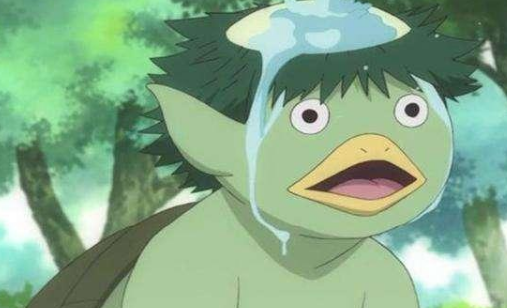
Kappa (河童)
Kappa is a Japanese monster that lives in and around water bodies such as lakes, ponds, rivers, etc.
It is a humanoid with amphibian and reptilian features. In some Japanese beliefs, they are also thought to be a form of “Suijin” or “Water God”.
A Kappa might have the body of a child or an adult human being with their greenish-colored skin with either scales or a slimy texture, webbed hands, and feet, a turtle-like shell on their back, a pointy mouth, and a special flat bowl-like feature on their head called “Sara (dish)” which is said to contain water.
This water inside a Kappa’s dish is somehow its life force and if it is spilled or dried up, the Kappa is weakened and might even die.
Kappa’s behavior and activities range between friendly, mischievous, menacing, and deadly. A Kappa might try to play tricks on people, or lure in people (especially children) into water bodies and drown them, challenge humans to engage in Sumo wrestling (Kappas love to wrestle and are known to be good at it), or even do helpful deeds such as helping farmers to irrigate their lands or bring fish to people as a gift.
In Japan, the presence of Kappa's influence can be seen everywhere, so much so that there are shrines, temples, and festivals dedicated to the worship of Kappa in many regions of Japan.
Fun facts:
- Kappa loves cucumbers and the association of cucumbers with Kappa in Japan is so strong that the sushi roll with cucumber in it is called “Kappa maki or Kappa roll” in Japanese.
- The name of a famous shopping district in Tokyo is “Kappa-bashi” and within this town is a temple called “Kappa-dera”. This temple has Kappa-themed architectural features and statues, and a mummified arm of a Kappa is known to be kept within the temple since 1818. At this temple, you can even make cucumber offerings to Kappa!
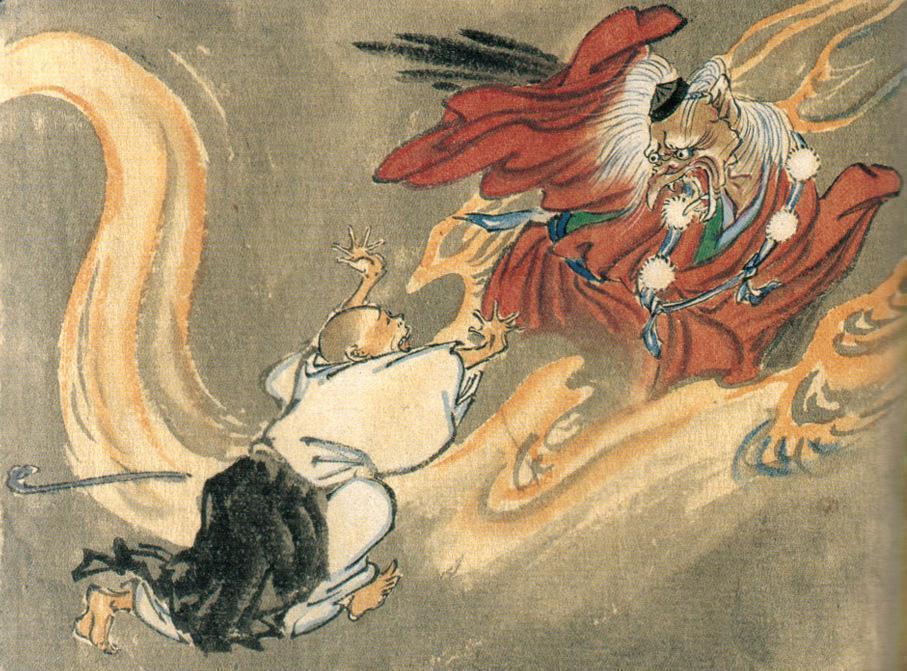
Tengu (天狗)
The Japanese word “Tengu" comes from two Chinese characters meaning "Heaven/celestial" and "Dog".
The word was first recorded in Japan in the year 637 in reference to something from Chinese mythology. This is why it is sometimes translated as "Heavenly Dog".
However, Tengu does not have any resemblance to dogs when it comes to physical appearance. Its appearance is more of a humanoid with avian characteristics such as big wings, claws, and the ability to fly.
The earliest Tengu was depicted with long bird-like beaks but it has evolved into the unusually long nose which is the defining characteristic of Tengu (a Japanese Pinocchio?).
Since the early 13th century, Tengu has been heavily associated with the mountain priests (Yama-Bushi) and hence Tengu started to be depicted with the clothing, accessories, and magical staff belonging to the Yamabushi priests.
Tengu has been known to be troublesome evil spirits and opponents of Buddhism who tried to mislead people into evil ways by activities such as possessing women or taking the form of attractive human females, nuns, or priests, to tempt or misguide Buddhist priests and people in general.
They were also known to be greatly skilled in the art of war and martial arts and were said to be angry and destruction-seeking warmongers.
However, with time, the image of Tengu has evolved into that of a protective deity or a good-willing god (however angry and ferocious still) and they are worshipped and celebrated through many temples, shrines, and festivals in Japan.
Fun fact:
- Many modern Japanese media have Tengu-inspired characters such as Tweeter (Super Mario Bros.), Shiftry (Pokémon), Karatenmon (Digimon), etc.
- There is a special emoji in Unicode for Tengu called the Japanese goblin emoji (👺)
Although these three (Oni, Kappa, Tengu) are known as the “Three Main Youkai of Japan”, many would debate this as there are so many other Japanese monsters that are just as significant and popular, if not more, than these three. Below we look at a few more essential Japanese monsters.
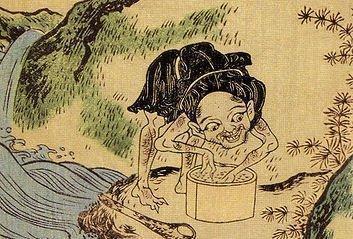
Azuki-Arai (小豆洗い)
Azuki Arai is translated to "bean washer" and these Youkai are more often 'heard' than 'seen'.
They are encountered mostly near streams in deep mountainous regions and forests of Japan.
Azuki-Arai is usually depicted as a short-statured old man with a large balding head and large bulging eyes with a mouth full of crooked teeth.
He is also known to have a crooked back bent over a bucket of Azuki red beans, making the sound “shoki shoki (the sound of washing the Azuki beans)” and singing a song while washing the beans. The song goes like this:
Azuki araou ka? Hito totte kuou ka? (shoki shoki)
Shall I wash my red beans, or shall I catch a human to eat? (shoki shoki)
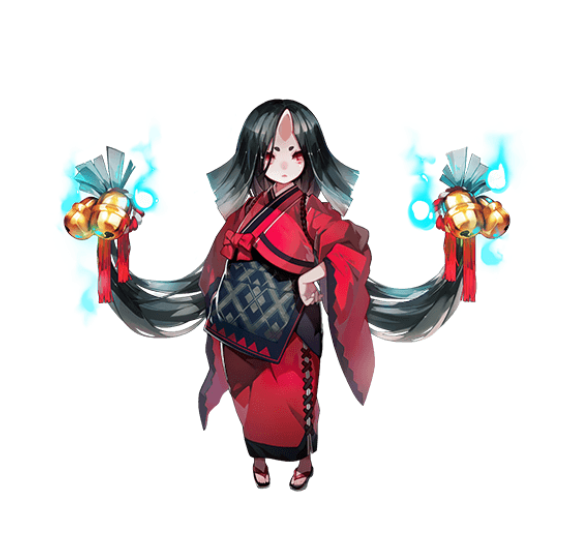
Zashikiwarashi (座敷童子)
“Zashiki” is a room within a traditional Japanese house that acts as a reception room for guests.
“Warashi” means a child. Zashikiwarashi are protective house spirits that bring good luck to a house if the members of the household are nice to them and don’t try to drive them away.
However, they can be quite mischievous and will make sounds of children playing, create footsteps around the house and also play with things kept in the parlor room, warehouse, or storage room.
They usually appear in the form of a boy or a girl of around 5 to 6 years old, wearing traditional Japanese clothing, and with red blushing cheeks.
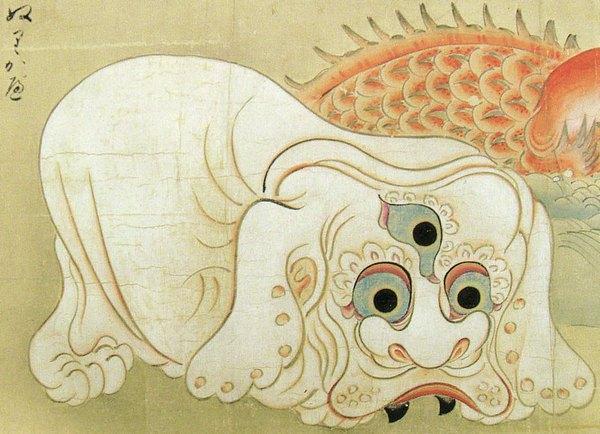
Nurikabe
“Nurikabe” translates to “Plaster wall” and it blocks the path of travelers at night to stop them from getting to their destinations or to mislead them towards a wrong path.
In the earliest records, Nurikabe was thought to be invisible but since the Edo period, artists have given it different kinds of appearances ranging from grotesque white beastly creatures to enormous white wall blocks with feet and a face.
Even though a large block of wall does not seem to be scary, in a realistic situation it is quite scary as there is no way to get around this Yokai.
You cannot go around it, nor can you jump over it, it also extends as far as you can see to the right and the left – shall we say claustrophobia incarnate?
Tsukumogami
We touched upon this group of Yokai in the earlier section and it is quite interesting.
According to Japanese folklore and some religious beliefs, when a household tool reaches its 100th birthday it doesn’t hold the Guinness world record for being the longest-used tool; it becomes an animated Yokai with its own spirit. Below are some of the most popular Tsukumogami.
Itttanmomen
Ittanmomen are a long narrow piece of cotton fabric (about 28.8 cm by 10 m) that can fly and wrap itself around people’s neck and bodies, sometimes even choking them to death.
Chōchin obake
Paper lanterns are a common feature of traditional Japanese interior and architecture, they are also very common as festival decorations.
“Chochin Obake” are Tsukumogami of the Japanese paper lanterns with a long tongue dangling out of a wide mouth and one or two large eyes.
Although a paper lantern with large eyes and a lolling tongue might be the last interior decoration piece you would want in your living room, these Yokai are not very malicious and the worst they would do is to scare away your guests.
Henge (変化)
Henge is a group of Yokai that are shapeshifting magical creatures or animals. There are many different types of them but we will look at the most popular ones.
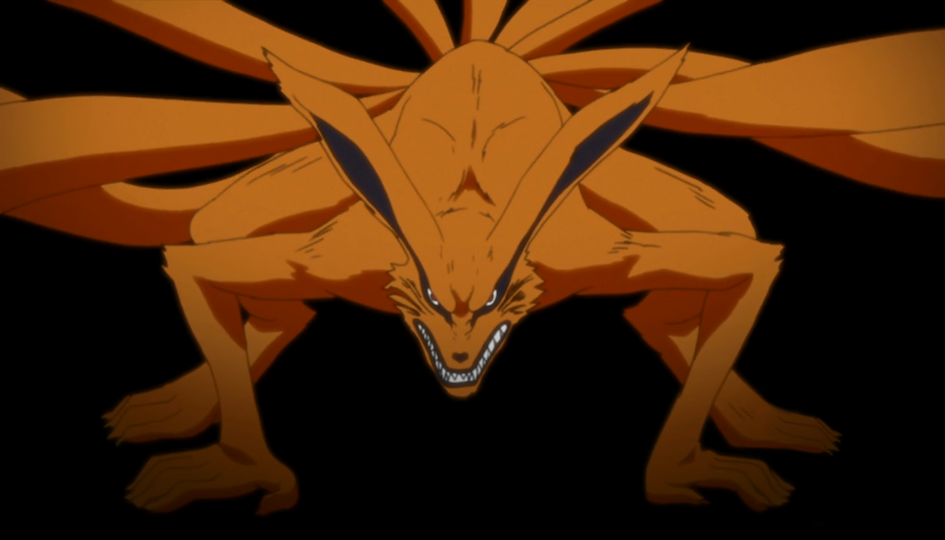
Kitsune ( 狐)
In Japan, Kitsune (Fox) is the animal that is most commonly associated with spiritual and supernatural forces.
First, there is the divine fox that is the messenger of Inari, the Shinto deity of prosperity and fertility. And this is why you will see many Kitsune statues and themes in Japanese temples and shrines.
The other variation is the Kitsune Yokai or wild foxes with powerful shapeshifting abilities and magical powers.
Kitsune are highly intelligent and not only do they play tricks and pranks on humans but also reward humans in generous ways if they feel that the receiver deserves it.
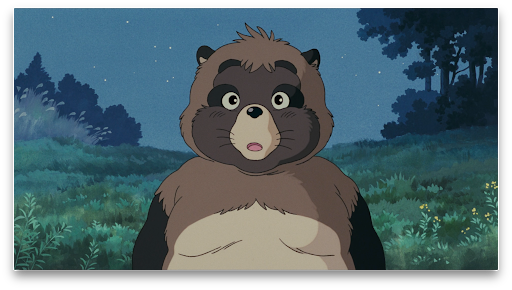
Tanuki (狸)
Tanuki is a Japanese raccoon (a mammal native to Japan) and they are the second most popular animal Yokai in Japanese folklore and mythology.
Tanuki are excellent shape-shifters and have a cheerful and jovial nature. That being said, they can use their magical powers to possess humans, as well as transform into humans, household objects, or parts of nature such as stones, trees, etc.
Through these tricks, they play funny pranks on humans and steal things from them.
Fun fact: The famous Studio Ghibli movie Pom Poko is based on Tanuki with magical powers.
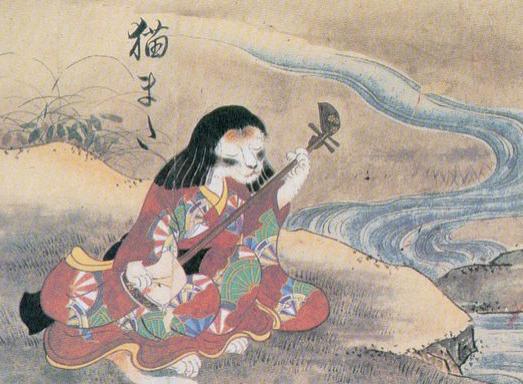
Bake-Neko (化け猫) and Neko-Mata (猫又)
Neko in Japanese means 'cats' and cats have been loved as domestic animals for centuries in Japan. However, there are also Yokai cats such as “Bake-Neko (Cat Monster)” and “Neko-Mata (Forked Cat)”.
Bake-Neko is known to be a cat that has lived very long (about 13 years) and has attained magical powers, wisdom, the ability to walk on two legs, to speak human languages, and the power to transform into different things-even its own master!
Neko-Mata is the most dangerous type of Bake-Neko and they are distinguished physically by being two-tailed.
They are the Bake-Neko that have lived the longest, have the most wisdom, power, and also are the most malicious and evil.
They start great fires to destroy towns and cities, killing many people, as well as controlling corpses and enslaving humans.
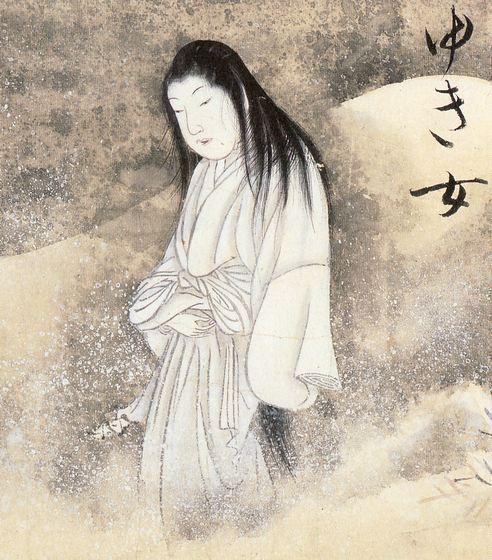
Yuki Onna (雪女)
Yuki Onna translates to “Snow Woman” and if you thought “Winter is Coming..” was bad news, then you should check out the true horror of a Japanese winter which is the Yuki Onna.
She is known to live in any snowy area of Japan, especially the snowy mountainous regions where she feeds on the souls of lost travelers who are stuck in a snowstorm or have lost their way.
They are known to have a bewitching unearthly beauty – hair long and dark, skin as pale as the white snow, body tall and slender.
However, they also reveal their true gruesome appearance once she has bewitched the victim and has the victim under her control. She can hunt her prey on mountain trails, as well as break into mountain lodges and freeze the inhabitants with her icy breath.
If you ever see a beautiful woman in a snowy mountain pass in Japan, the best thing to do would be to run in the other direction.
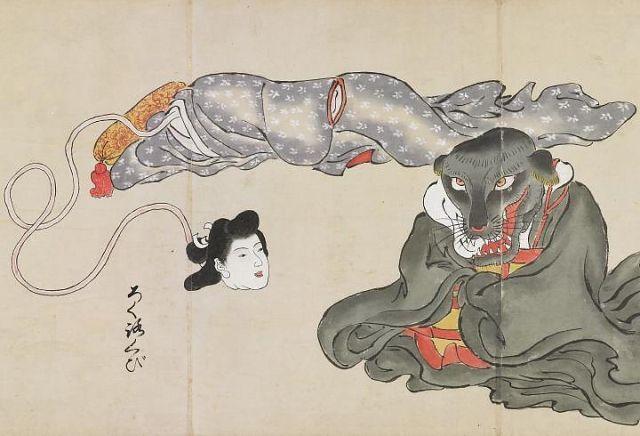
Rokurokubi and Nukekubi
Rokurokubi (extending neck) is one of the oldest Japanese Yokai depicted in many literature, art, and folklore.
Rokurokubi has a major difference compared to many popular Yokai, in the fact that instead of being born as a Yokai from the beginning, they originate as human beings, more specifically, female human beings.
They are female human beings who turned into a Rokurokubi due to an evil curse or bad luck. As their name suggests, their neck can extend a long way from their shoulders and move far away from their bodies.
Rokurokubi are not as dangerous as their head will only go as far as licking up lamp oil (yes that is their favorite food), feed on small animals, or spy on or scare people. Now Nukekubi (removable neck) is an advanced variant of Rokurokubi and is the deadly sister of Rokurokubi.
Her head can come off from the neck, float around far and away from her body. She has a vampire-like thirst for blood and violence, and her detached head will prey on humans, bite them to death or suck them dry of blood.
Yuurei
At the beginning of the article, we touched upon the fact that Yuurei is different from Yokai as they are more of ghosts, phantoms, or apparitions rather than creatures.
They are the spirits of the dead or the spirits who could fail to pass over to the afterlife peacefully. In terms of appearance and depiction, Yurei are creepier and more gruesome than colorful Youkai as Yurei are believed to be forced to linger on in this world due to reasons like emotional attachment, deep-seated grudge, or thirst for revenge.
Let's look at several distinctive features of Japanese Yurei that will help to recognize them just in case one appears in front of you!
Yurei are usually dressed in white, traditionally in different kinds of kimono and special headwear called the hitaikakushi(forehead cover), which is a triangular piece of white cloth worn on the forehead by Yurei.
This comes from the fact that during the Edo period in Japan, the white kimono was the burial clothing for the dead, symbolizing purity.
They usually have long, straight, and disheveled hair.
The hands of a Yurei are dangling lifelessly in front of the Yurei or at their sides, creating an atmosphere of melancholy and lifelessness.
Yurei usually do not have legs or feet and float above the ground.
- Hitodama (Spirit flame balls)
Yurei are usually accompanied by balls of fire floating or flying around them.
These balls of flame are thought to be souls of the dead that have separated from the human bodies. The flames might even have a sorrowful blue color.
- Association with Willow trees
In Japan, when one thinks of a Yurei the image of a Japanese willow tree automatically pops up in mind.
This is because the Japanese willow tree (Yanagi tree) is known to be one of the most common places for Yurei to appear. Take our advice and don’t go near a willow tree alone at night!
- Accompanied by the sound “Hyu~~Doro doro”
Whether it be just your friend trying to scare you, in movies, or books, Yurei are almost always accompanied by the sound “Hyuu~Doro doro”.
The origin of this is Kabuki (traditional Japanese theater) where the appearance of a Yurei is dramatized by the sound effect “Hyuu” (created by flute) and “Doro doro”(created by the bass drum)
Looking for more? - Recommended for Yokai Enthusiasts
If you have gotten yourself with some of the most famous Japanese monsters but are still craving for more Yokai-ness, then read along this section to know about some fantastic Yokai anime and movies that you can watch, museums that you can visit, and festivals where you can celebrate Yokai and join a grand Yokai parade.
Anime and Manga
GeGeGe no Kitarō: There are many Japanese anime and manga about Japanese monsters but if you had to choose one that is a timeless classic then this would be the one.
This is a manga series that has also been adapted into an anime series that follows a Yokai boy called “Kitaro” and his Yokai friends who are the last surviving members of the Japanese Ghost Tribe.
This series is an essential watch as it provides an in-depth look at Japanese traditional monsters and spirits.
Video Game
Yo-kai Watch: This is a role-playing video game that was first released on Nintendo 3Ds in 2013 but has quickly become a global phenomenon and has been released on other platforms as well such as mobile and PlayStation.
It is about befriending different Yokai and fighting evil Yokai with the help of friendly Yokai. Yo-kai Watch has become so popular that now it even has its own anime and manga series.
Movie
Yôkai Daisensô /The Great Yokai War (2005)
There are many Yokai-themed Japanese movies that were made during the 1960s but this one is a more modern version with believable CG and costume design, without losing the essence and classic depictions of the traditional Japanese Yokai.
This is also a great movie to get you started with this genre as it draws elements from many older Japanese Yokai movies and folktales.
Book
Yokai Attack! The Japanese Monster Survival Guide might not be the most traditional Japanese Yokai book but it is the most accessible one, and at the same time is informative and enjoyable for English-speaking Yokai enthusiasts who want a beginner-level guide to Japanese monsters. It includes colorful illustrations and well-organized information on around 50 different Yokai.
Museum
Yokai museum also known as Miyoshi Mononoke Museum is a museum in Hiroshima where the general public can immerse themselves in the fascinating world of Yokai.
The benefactor of this museum is Yumoto Koichi, Japan’s biggest Yokai art collector. His Yokai-related collections that have been meticulously curated over more than 30 years are displayed here.
These include Yokai-themed woodblock prints, artworks, scrolls, statues, mummies, kimono, antique newspaper articles, and the list goes on.
Even though the museum is set inside a traditional Japanese-style building, the items on display within the museum are equipped with very modern technology so that you can even have an interactive experience with the items.
Festival
Tokushima Yokai Festival is a festival held in November of every year in Miyoshi city of Tokushima prefecture in Japan.
Although Japan has countless festivals featuring monsters and spirits, this one is the biggest and the most well-known.
The highlight of this festival is a grand Yokai parade where anyone can join in wearing Yokai costumes and march along with the town.
Although it might sound scary, the parade starts during the daytime and even children join in along with the adults so it is a cheerful and festive event full of fun and colors.
Visit an Obake-Yashiki
Obake Yashiki translates to "Haunted House" but it is a feature of almost every Japanese amusement park.
In Japanese amusement parks, an "Obake-Yashiki” is just as important as a roller coaster or a Ferris wheel. Depending on the amusement park, “Obake-Yashiki” might be a special building that you are challenged to walk through or a full-blown ride with Yokai themes.
The main feature of it would be that it is darkly lit, with smokes and scary sound effects, different Yokai trying to give you a heart attack at every step – Yokai hanging from the ceiling, a Yokai puppet trying to scare you out of nowhere, or even a human in Yokai costumes trying to block your way to the exit.
How to keep the Yokai at bay
Unless you are such a big Yokai fan that you want them in your proximity and to befriend them, it would be good to know some traditional Japanese ways to keep the Yokai away from your surroundings. Below are some of the most common methods.
O-harai can be thought of as a cleansing or purification ritual performed especially by or in the presence of a priest. This term comes from the Shinto belief, one of the major religious beliefs in Japan. The steps of the ritual vary widely but involve things such as chanting of special prayers, standing under a cold waterfall, a sprinkling of salt, and the shaking of a stick with white paper cuttings attached to it over the person, place, or object for o-harai.
Salt is supposed to ward off not only Yokai but any kind of bad luck, evil spirits, diseases, etc. You can sprinkle salt over your shoulders, put a bowl of salt at your doorsteps, or make a small salt mountain around the place that you want to be protected.
If you have ever gone to a gift shop that is part of a Japanese temple or a shrine, you must have beautifully embroidered colorful bags with Japanese characters written on them. In case you have been wondering what they are, these are called "Omamori” which translates to “Protections”. You can buy them and use them as your key rings, mobile straps, or simply place them near your surroundings to keep the Yokai away.
Ofuda is a talisman that can be made of different materials such as paper, wood, metal, etc., and is believed to have the power to provide protection against monsters, bad luck, evil spirits, etc. These are created with the seal or writings given by the priests of a temple or a shrine.
At this point, not only are you familiar with various Japanese monsters and spirits, but you know where to befriend them and also how to defeat them. The decision is yours to make your very own Yokai best friend, to become a know-it-all Yokai professor, or to be the next big Yokai buster!